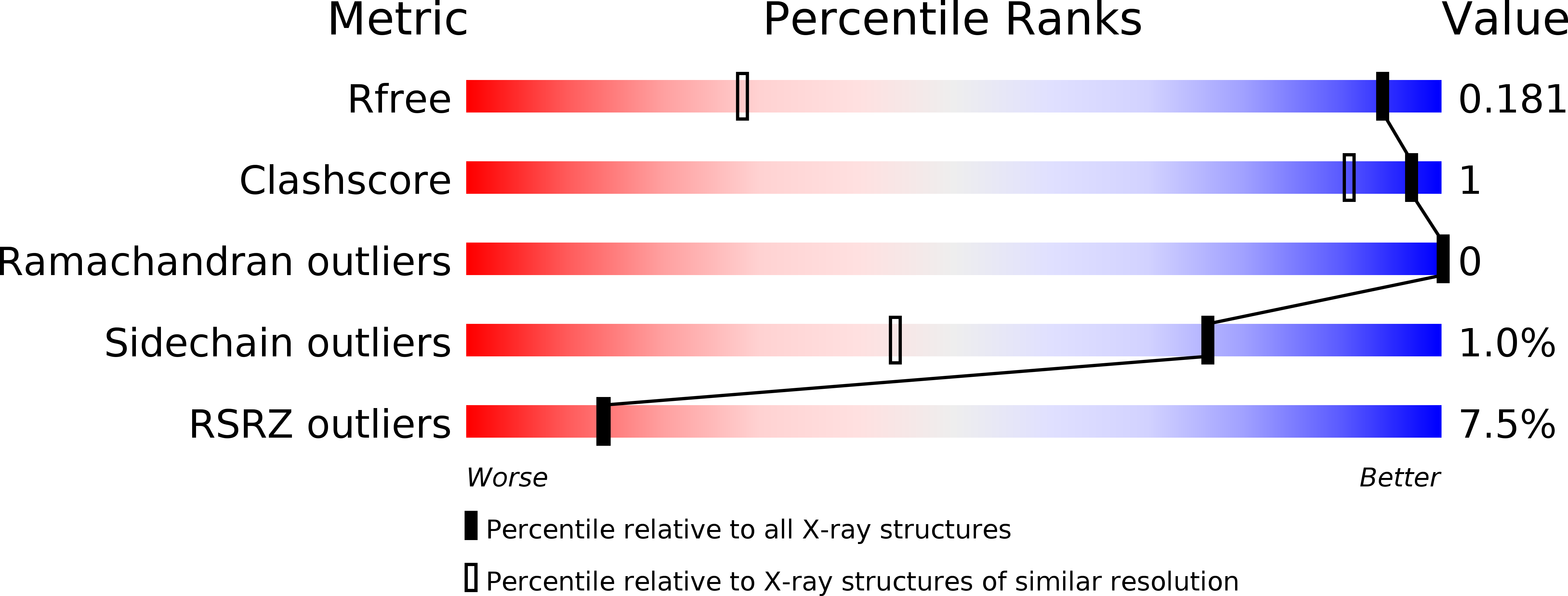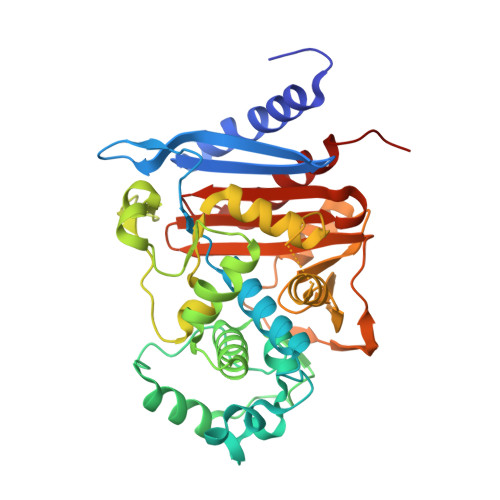Structural Insights into Catalytic Relevances of Substrate Poses in ACC-1.
Bae, D.W., Jung, Y.E., An, Y.J., Na, J.H., Cha, S.S.(2019) Antimicrob Agents Chemother 63
- PubMed: 31451494
- DOI: https://doi.org/10.1128/AAC.01411-19
- Primary Citation of Related Structures:
6K8X, 6K9T, 6KA5, 6KBY - PubMed Abstract:
ACC-1 is a plasmid-encoded class C ¦Â-lactamase identified in clinical isolates of Klebsiella pneumoniae , Proteus mirabilis , Salmonella enterica , and Escherichia coli ACC-1-producing bacteria are susceptible to cefoxitin, whereas they are resistant to oxyimino cephalosporins. Here, we depict crystal structures of apo ACC-1, adenylylated ACC-1, and acylated ACC-1 complexed with cefotaxime and cefoxitin. ACC-1 has noteworthy structural alterations in the R2 loop, the ¦¸ loop, and the Phe119 loop located along the active-site rim. The adenylate covalently bonded to the nucleophilic serine reveals a tetrahedral phosphorus mimicking the deacylation transition state. Cefotaxime in ACC-1 has a proper conformation for the substrate-assisted catalysis in that its C-4 carboxylate and N-5 nitrogen are adequately located to facilitate the deacylation reaction. In contrast, cefoxitin in ACC-1 has a distinct conformation, in which those functional groups cannot contribute to catalysis. Furthermore, the orientation of the deacylating water relative to the acyl carbonyl group in ACC-1 is unfavorable for nucleophilic attack.
Organizational Affiliation:
Department of Chemistry & Nanoscience, Ewha Womans University, Seoul, Republic of Korea.















